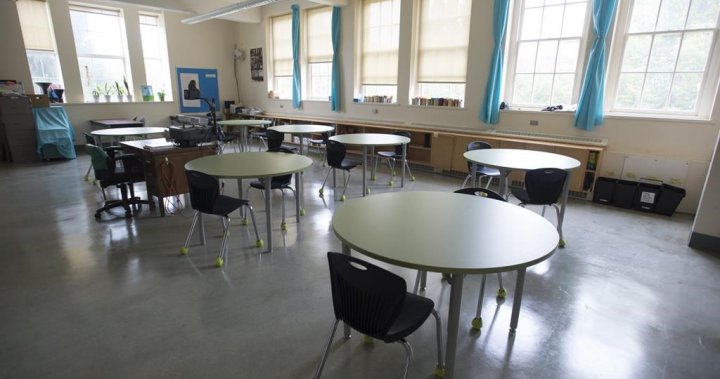Kate Laing’s family successfully avoided contracting COVID-19 for over two years. However, when her oldest son returned to school last year, he contracted the virus within three days and brought it home. Laing believes that cleaner air in the classroom could have helped prevent his infection while he was unmasked during lunchtime. Her son, who suffers from asthma, became sick as a result, as did her younger son who was not yet attending daycare at the time. Frustrated with the situation, Laing joined a group called Ontario School Safety, composed of concerned parents and an epidemiologist, and is now the group’s chair.
Since then, grassroots organizations of parents, healthcare workers, and teachers have formed across Canada to advocate for safer schools with improved air quality. While initial focus was on protecting against COVID-19, these groups have expanded their concerns to include other viruses like the flu and RSV, as well as wildfire smoke and other air pollutants that pose risks to students and education workers. According to Amanda Hu, spokesperson for parent advocacy group Fresh Air Schools Alberta, despite the growing importance of these issues, little has been done to address them.
One of the most effective strategies to protect against both viruses and air pollution in schools is improving ventilation and implementing air filtration systems, according to parent groups and air quality experts. Jeffrey Siegel, a civil engineering professor specializing in air quality at the University of Toronto, suggests placing high-efficiency particulate air (HEPA) filters in every classroom. Alternatively, well-constructed do-it-yourself units using a box fan and good furnace filters can also be effective. These units, often referred to as “Corsi-Rosenthal boxes,” should ensure a decent filter that moves a substantial amount of air in the space. While HEPA filters offer the highest filtration quality, DIY versions can be effective as long as they use filters with at least a MERV 13-rating, capturing particles efficiently, and are sealed tightly to prevent air bypassing the filters.
Additionally, schools can consider upgrading their HVAC systems with MERV 13 filters, although it may be more cost-effective to install high-quality air filters in each classroom. Roger Haskett, a father and air quality coordinator with the Vancouver District Parents Advisory Council, has been advocating for installing HEPA filters in classrooms, including DIY options. He believes there is hope for progress now that governments are recognizing the need to improve air quality due to the growing threats of wildfires. Unlike viruses, smoke pollution is visible in the air and seems less politicized. By addressing smoke pollution, clean air can be brought into classrooms and simultaneously solve several other problems.
According to Siegel, the issue lies in how governments and school boards prioritize air quality in schools. Instead of solely considering costs, they should also assess the cost of not improving air quality. Ontario Education Minister Stephen Lecce’s office stated that the province requires standalone HEPA filters in certain classrooms and has invested over $665 million in air quality improvements in schools. However, the Ontario School Safety group claims that many classrooms still lack HEPA filters or they remain turned off. Lack of education for teachers about the importance and proper use of air filters could be part of the problem.
For example, some teachers may turn off filters due to noise issues. Siegel suggests using smaller HEPA filters placed strategically around the classroom to minimize noise while ensuring adequate air filtration. Alberta does not have any specific guidance on the use of HEPA filters in schools from the provincial government, although the Edmonton public school board has adopted them while the Calgary public school board has not. Ultimately, these grassroots organizations continue to advocate for cleaner air in schools, recognizing that improved air quality benefits students and education workers not only during the pandemic but also for future airborne illnesses and pollutants.
Denial of responsibility! Vigour Times is an automatic aggregator of Global media. In each content, the hyperlink to the primary source is specified. All trademarks belong to their rightful owners, and all materials to their authors. For any complaint, please reach us at – [email protected]. We will take necessary action within 24 hours.


